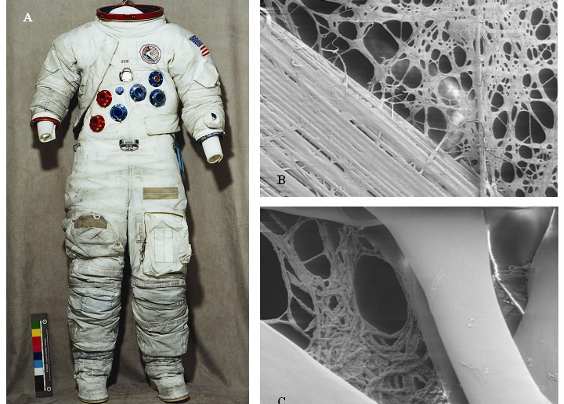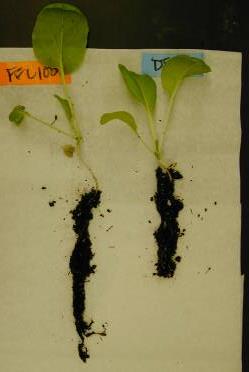|
Harvard School of Engineering and Applied Sciences / Laboratory of Applied Microbiology |

|
Past Projects |


|
USS Arizona
The USS Arizona, a national shrine and naval memorial located in Pearl Harbor, Hawaii, is visited annually by more then 1.5 million people (Fig. 1). In addition to the remains of more than 1000 sailors and marines, the ship contains an estimated 2300 tons of fuel oil. Corrosion and deterioration of the ship both threaten an important national monument and represent a severe environmental hazard. This study investigated the bacterial composition of concretions on the USS Arizona. We identified bacteria from three phyla that may be involved in corrosion of the ship and utilization of oil leaking from the USS Arizona. This study was part of a larger effort by the National Park Service Submerged Resources Center to analyze the current condition of the USS Arizona, to predict the future course of deterioration of the ship, and to preserve the site for future generations. |
|
Apollo Spacesuits
The United States Smithsonian Institution’s National Air and Space Museum preserves the world’s largest collection of spacesuits and their components relating to the American space program. Included in this collection are historically significant suits from the Apollo lunar missions which took place between 1968 and 1972. The Apollo suits are composed of multiple layers, many of which have begun to degrade. The role of microorganisms in the deterioration of the space suits was investigated in this study. Fungi belonging to the genera Paecilomyces and Cladosporium were cultured from two synthetic polymers contained within the suits. Fungal growth occurred rapidly, and isolates were capable of degrading the synthetic polymers. Scanning electron microscopy was used to observe development of fungal hyphae on individual fibers of the cloth. Our data indicated that the growth of these fungi on the suit materials was a contributing factor to the deterioration of interior layers of the Apollo spacesuits. |
|
Maya Archaeological Sites
The Maya archaeological sites in southern Mexico, some of the most important cultural artifacts in the Western Hemisphere, are constructed of limestone. High temperature and humidity have resulted in substantial microbial growth on stone surfaces at many of the sites. Despite the porous nature of limestone and the common occurrence of endolithic microorganisms in many habitats, little is known about the microbial flora living inside the stone. We found a large endolithic bacterial community in limestone from the interior of the Maya archaeological site Ek’ Balam. Analysis of 16S rDNA clones demonstrated disparate communities (endolithic: >80% Actinobacteria, Acidobacteria, and Low GC Firmicutes; epilithic: >50% Proteobacteria). The presence of differing epilithic and endolithic bacterial communities may be a significant factor for conservation of stone cultural heritage materials. |



|
Enzymatic Removal of Red Staining from Stone
Many marble statues, facades, and monuments throughout Europe and North America suffer from unsightly red stains. The cause of the staining is the subject of intense discussion. In some instances the staining is likely caused by the presence of the red lead oxide minium. In other cases the cause may be microbial. We isolated and identified a pigmented microorganism from the surface of Isamu Noguchi’s Slide Mantra in Bayfront Park, Miami, FL. Analysis of the pigmented microrganism’s ribosomal gene identified it as Serratia marcescens and Fourier transform infrared spectroscopy identified the pigment as a prodigiosin. Upon exposure to the enzyme laccase the pigment extract was completely decolorized. This enzyme could be used to remediate the surfaces of Slide Mantra and other stone objects where the cause of red staining is microbial. |


|
Microbiological Investigation of the Brown Spots in King Tutankhamen’s Tomb
The tomb of King Tutankhamen, which is more than 3000 years old, was discovered in 1922 with nearly all of its funerary contents intact. Many large brown spots are present on the walls, partially obscuring the wall paintings. Previous research on the nature and origin of these brown spots has been inconclusive. We are investigating a possible microbiological role in the formation of these brown spots. This research is being undertaken as part of a collaboration between the Getty Conservation Institute and Egypt’s Supreme Council of Antiquities for the conservation of the tomb. |

|
FFC
We are currently studying two aspects of the FFC Technology water treatment system produced by the Akatsuka Co., Ltd., Japan. First, FFC Technology enhances plant growth and stress resistance. In a number of experiments, using radish, Shirona (a Japanese green) and soybean plants, we have shown the FFC increases plant size and improves drought resistance. The primary mechanism is thought to be the addition of micronutrients. We are also studying the ability of FFC to inhibit bacterial attachment to surfaces. FFC inhibits Pseudomonas aeruginosa attachment to titanium alloys, which are widely used in the medical, dental, and aerospace industries. |

